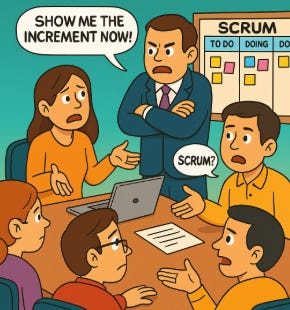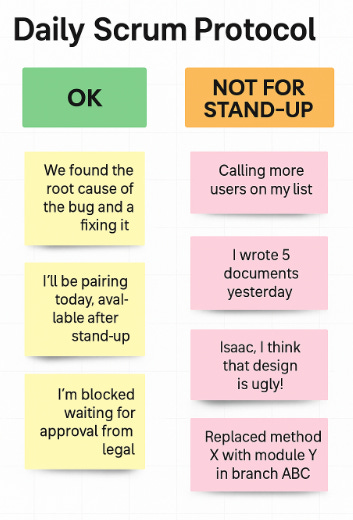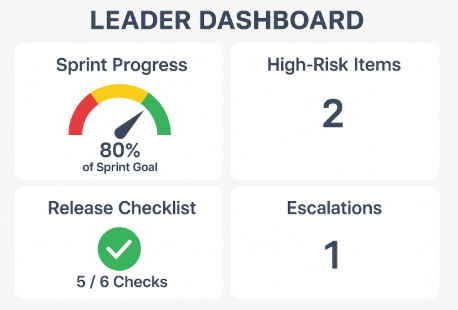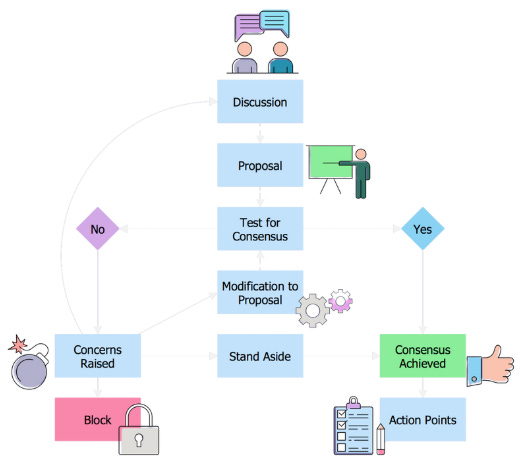When Leadership Micromanages: The Calm Playbook to Reclaim Team Autonomy
How to Protect Team Autonomy When Leaders Start Micromanaging
I remember one release week clearly.
We were two days away from a release window and the team was heads-down fixing integration tests. I was about to run the deployment checklist when a senior leader pinged in the channel and then joined the stand-up unannounced.
He asked to see the “line-by-line progress” of each developer and suggested changing the deployment script mid-day.
The room froze.
Developers looked up from code. The PO tried to explain the dependencies. I felt the tension: if I pushed back, I risked looking like I was hiding something; if I let him dictate, the team would lose focus and confidence.
That week we shipped late and with more defects than usual. After some reflection, I realised micromanagement wasn’t malicious — mostly it came from pressure and lack of visibility. But ignorance doesn’t excuse its impact.
Since then I built a playbook to handle this exact situation: calm the leader, protect the team, and create better visibility so everyone trusts the process.
Below is 5 Field-Tested Strategies I now coach teams to do — step by step.
Strategy 1: Stop the Interruption: Create a Fast, Respectful Deflection
Step-by-step actions:
When a leader jumps in mid-work, use this line immediately:
“Thanks for the check-in — we are in a critical delivery window. We’ll note your concern and set a 15-minute sync right after the stand-up so we can give you focused updates without disrupting the team. Will 10:45 work?”Move the detailed conversation to a time-boxed slot (15 minutes) and keep the stand-up focused on the team’s plan.
If they insist on continuing, say: “If you join the stand-up now, we’ll need to move into tactical details that will pull the team off work. Let’s schedule a quick handover so they can resume.”
Challenge: Leaders feel ignored.
How I overcame it: Always acknowledge their concern first — never shut the door. Promise a concrete next step and follow through immediately with the sync. That converts anxiety into scheduled attention.
Strategy 2: Offer Structured Visibility (so leaders don’t feel the need to peek)
Step-by-step actions:
Create a single “Leader Dashboard” with 4 tiles: Sprint Goal progress, High-risk items, Release checklist status, and Escalations.
Send an automated short summary every morning (2–3 lines) to the leadership channel: what shipped yesterday, one risk, and planned work today.
Invite the leader to a 15-minute weekly “Leadership Sync” instead of ad-hoc checks.
Scripts to use:
“To give you reliable visibility, we will send a morning short summary and host a 15-minute leadership sync every Tuesday. This keeps interruptions to a minimum while ensuring you’re comfortable with progress.”
Challenge: Leaders want more frequent talking points.
How I overcame it: Show them the dashboard for two weeks. Data calms anxiety — if the dashboard answers their questions, the ad-hoc checks fall away.
Strategy 3: Negotiate Clear Boundaries with a Short Engagement Charter
Step-by-step actions:
Draft a one-page Team-Leader Engagement Charter with items like:
When to escalate (severity and example).
Preferred channel for urgent asks.
Hours when team should not be disturbed (focus windows).
Present it in a 10-minute meeting with the leader: “This is how we’ll give you control without breaking the team’s flow — can we agree?”
After agreement, publish the charter in Confluence and pin it in the team channel.
Script:
“If you agree, we will follow this charter for the next quarter and we will review it in the first leadership sync.”
Challenge: Some leaders resist rules.
How I overcame it: Emphasise mutual benefit: less noise for the team, reliable updates for them. Offer a 1-month trial.
Strategy 4: Convert Micromanagement into Coaching Moments
Step-by-step actions:
When a leader suggests tactical fixes, ask a clarifying coaching question:
“What outcome are you trying to achieve with that change?”If the answer is about risk or deadline, translate it into an action: “We can address that by X — here’s the trade-off (time/quality). Shall we book a 30-minute war-room to explore?”
Offer to demonstrate your plan in their next review so they feel part of the resolution.
How I used it: I once asked this question and the leader realised they were worried about monitoring. We added one simple automated alert — no micromanagement needed afterwards.
Strategy 5: Escalation That Protects Autonomy (and documents impact)
Step-by-step actions:
If micromanagement persists after agreements: document specific interruptions (time, impact). Use a simple log.
Request a 1:1 with the leader: present the log and the quantifiable impact (e.g., “We lost 6 developer-hours this week due to ad-hoc deploy changes; test coverage dropped by X%.”)
Propose a corrective plan: stricter charter enforcement + an executive summary each morning + a limited “observation” window for leaders (e.g., 1 time per week).
If needed escalate to their manager showing data and the team’s commitment to delivery.
Script for 1:1:
“I want you to know the steps we took to keep you informed. These ad-hoc interruptions have cost X hours. Here’s a practical plan to give you visibility and protect delivery. Can I have your support to enforce this?”
Challenge: Leaders may push back defensively.
How I overcame it: Bring data and show you want the same outcome — on-time, quality delivery. Data + empathy is persuasive.
Quick Win to Try Tomorrow
This afternoon, when a leader posts a tactical ask in the team channel, try the first deflection script:
“Thanks — let’s capture this in a 15-minute sync at 4pm so the team can keep focus till then. Will that work?”
See how many interruptions you avoid in one day. Small wins build trust quickly.
Community of Practice
Want to role-play these conversations and practice the scripts live?
Join my Community of Practice (CoP) every Thursday — we run 1:1 role plays and feedback.
🔗 Register here
Ready to Turn These Strategies into Action?
Join the Scrum Master Bootcamp!
If you want to internalise these moves fast, join the Scrum Master Bootcamp. In the Bootcamp we simulate pressured releases and practice these exact scripts until they feel natural.
Next batch opens soon and seats are limited to 25 participants to keep coaching tight. Reserve your seat now!
Don’t just learn — experience the difference in real time.
📚 From My Shelf
This Week’s Book: The 7 Habits of Highly Effective People by Stephen R. Covey
(A timeless classic on effectiveness and leadership.)
Covey doesn’t just talk about productivity hacks.
He talks about paradigm shifts — how changing the way we see the world changes the way we act in it.
From “Be Proactive” to “Sharpen the Saw”, each habit builds on the other, forming a framework for personal mastery and interdependence. It’s not about quick wins but about character, principles, and long-term effectiveness.
One sentence that really stayed with me was:
👉 “Seek first to understand, then to be understood.”
📖 For any Scrum Master or Product Owner working with teams and stakeholders, this book is a blueprint for influence. It reminds us that effectiveness doesn’t come from pushing harder, but from listening deeper, leading with values, and building trust step by step.
Why Subscribe
Each week, I share battle-tested strategies, messy lessons, and practical tools that help Scrum Masters, Product Owners, and change agents like you make sense of chaos — without sugar-coating it.
If you found this useful, subscribe.
This isn’t theory. It’s real work, made a little easier — one step at a time.
Thanks for reading Strategy For Success! Subscribe for free to receive new posts and support my work.
“Just because I understand it, does not mean everyone understands it. And just because I do not understand it, does not mean no one understands it.”
Thanks for reading Strategy For Success! Subscribe for free to receive new posts and support my work.








